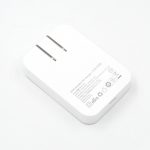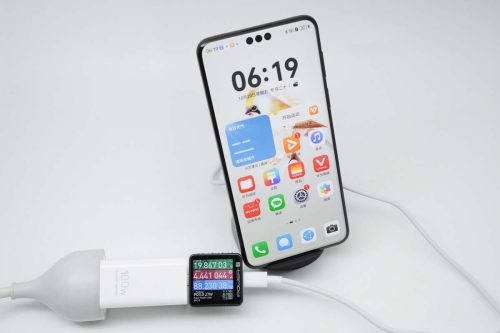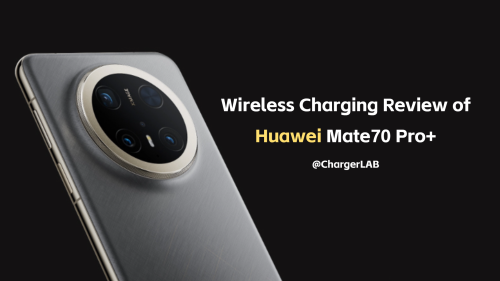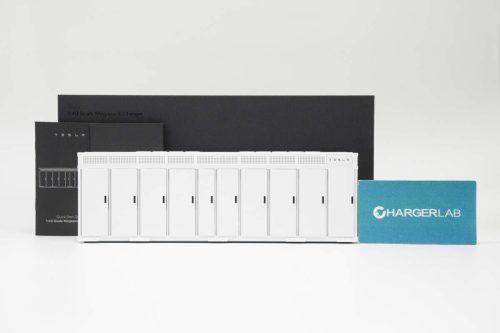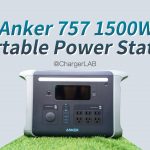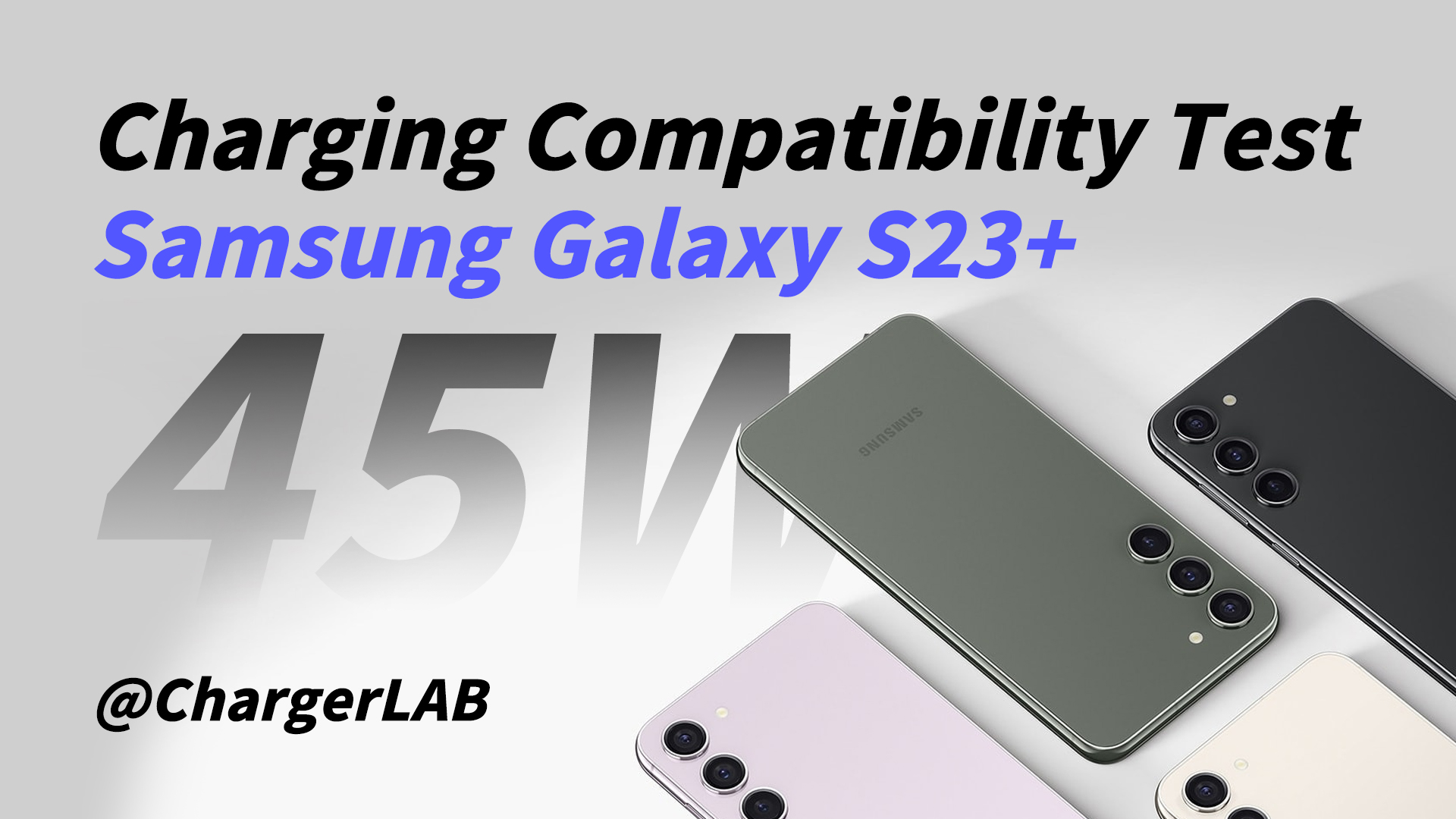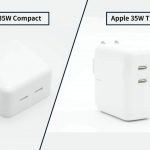The RAVPower 45W Ultrathin PD Charger is one of the first GaN chargers available on the market. It uses GaNFast solution from Navitas, reaching a power density unimaginable for conventional chargers, and remains one of the slimmest 45W chargers on the market today. And here's our teardown review.
I Unboxing

A very refreshing mint green box.

Specifications on the back.

Package contents: charger and user manual. No cable included.

It is a rounded rectangle in glossy white finish.

Foldable prongs. Very pocketable.

Model: RP-PC104
Input: 100V-240V~50/60Hz 1.25A
Output: 5V/3A, 9V/3A, 12V/3A, 15V/3A, 20V/2.25A, 45W Max

The single USB-C port.

It is very slim looking from the side. Our unit has US standard foldable prongs.

It is almost half the height of the Apple 61W PD charger.

Compared to the iPhone XS Max.

Dimension: 80x55.7x15.5mm (2.8×2.1×0.6in).

It weighs 79.5g/2.8oz which is quite light for a 45W charger.

The downside of being slim. It is not very socket-friendly since it has a relatively wide profile.
II Review
1. Charging protocols test

Using ChargerLAB Power-Z FL001S USB power tester, we know that it supports USB PD and Apple 2.4A protocol.
2. PDO information

PDO information reveals the USB-C port supports quick charging output in 5V/3A, 9V/3A, 12V/3A, 15V/3A, and 20V/2.25A.
3. Compatibility Test

Charging the iPhone XS Max, we are getting 9.09V 1.98A 18.06W, under PD protocol.

Charging the iPad Pro 11-inch, we are getting 15.1V 2.02A 30.51W, under PD protocol.

Charging the iPad Pro 10.5-inch, we are getting 15.09V 1.99A 30.15W, under PD protocol.

Charging the iPad Air2 which doesn't support USB PD, we are getting 5.19V 2.42A 12.57W, under Apple 2.4A protocol.

Charging the Nintendo Switch, we are getting 15V 0.81A 12.22W, under PD protocol.

Charging the MacBook Pro 13.3-inch, we are getting 19.92V 2.18A 43.54W, under PD protocol.
III Teardown

Pry open the case along the side. We can see the internal PCBA of the charger is completely wrapped by a heat-dissipating copper plate and insulating tape, with a large thermal adhesive on top, which can evenly transfer the heat generated by the internal PCBA to the outer casing to avoid overheating during operation.

Remove the thermal paste reveals the copper plate.

Peel off the tape and we are greeted by a transformer and the four horizontal input filter capacitors.

After further disassemble, we can see the capacitors are glued, and the other side of the PCBA is also applied with thermal adhesive.

There is an aluminum heat sink on the back of the PCBA.

The aluminum heat sink is soldered to the PCB.

The insulating tape on the back of the aluminum sheet. Major heat-generating components are applied with thermal conductive glue, which dissipates heat through the aluminum sheet.

The thickness of the entire PCBA is merely 10.5mm.

There are a slow-blow fuse, a two-stage common-mode choke and an X capacitor on the input side to form the EMI circuit.

A 3.15A input, 250V fuse.

The close-up of the X capacitor.

We can see the charger uses a planar transformer, and the output solid capacitors also have a low profile.

The input side uses four Aishi electrolytic capacitors, the specifications are 400V 15μF, 60μF in total. The output side has two CapXon solid capacitors, 25V 100μF.

Close-up of the electrolytic capacitors on the input side.

Close-up of the solid capacitors on the output side.

The sticker on the transformer indicates it was made in the 45th week of 2018, and passed the Class B Hi-Pot test.

A rubber isolation cover at the corner of the transformer circuit board.

Under the sticker on the transformer is a copper foil shield that wraps the core of the transformer.

Remove the isolation cover and there is a MOS tube and metal alloy inductor.

Removing the transformer, the circuit board on the back of the transformer is a synchronous rectification circuit, with MLCCs for filtering at the output side.

The components on the back. Major heat-generating components are applied with thermal conductive glue to dissipate heat.

3A output rectifier bridge at the input side.

Y capacitors in 1206 package.

Silicon Labs SI8610BB isolator for 2.5kV and ACF upper tube isolation.

Detailed specifications of the Silicon Labs SI8610BB.

Two NV6115 GaN power ICs from Navitas Semiconductor with built-in driver, 170mΩ resistance, and 650V withstand voltage. It supports 2MHz switching frequency and comes in 5*6mm QFN package to save space.

Detailed specifications of the Navitas NV6115.

UCC28780 from TI is a high-frequency active-clamp flyback controller that enables high-density AC-to-DC power supplies with a variable switching frequency of up to 1 MHz. User programmable advanced control law features allow performance to be optimized for both Silicon (Si) and Gallium Nitride (GaN) power FETs. We've seen the use of TI UCC28780 in our teardown of the AUKEY PA-Y19 27W GaN Charger which is also powered by GaNFast solution from Navitas.

Detailed specification of the TI UCC28780.

Everlight 1018 opticalcoupler for feedback voltage regulation.

Weltred WT6615F USB PD controller.

The WT6615F is a highly integrated USB Power Delivery (PD) controller that supports USB PD 3.0 Programmable Power Supply (PPS) specification and Qualcomm Quick Charge 4 or Quick Charge 4+ technologies designed for USB Type-C Downstream Facing Port (Source) charging applications such as power adapters, wall chargers, car chargers, power strip, power banks, and etc. The WT6615F is also used in AUKEY 27W GaN charger and Anker PowerPort Atom PD 1 30W GaN Charger.

Vanguard Semiconductor VS3506AE P-Channel FET As output overcurrent detection resistor and output MOS transistor.

Close-up to the USB-C port.

Taking a second look at the planar transformer. The core is fixed to the circuit board using black glue.

The core is grounded.

The thickness of the planar transformer is 7.8mm.

Synchronous rectifier controller from MPS.

Infineon BSC098N10NS, withstand voltage 100V, 9.8mΩ resistance for output synchronous rectification.

Detailed specification of the Infineon BSC098N10NS.

The case is made of flame retardant PC (polycarbonate) material.

All the components.
IV Conclusion
Powered by GaNFast solution from Navitas, the RAVPower 45W Ultrathin PD Charger is powerful, light, and slim. After all those years, we finally have a compact and pocketable charger that can charge our laptops.
On the inside, the charger is carefully designed with neat layout and multiple heat dissipation methods on top of high quality components.
The $40 retail price is a little pricy, but it is often discounted at Amazon ($35 as of now) which seems reasonable for a cutting-edge charger like this.
Pros:
Can charge a laptop.
Slim.
High quality components and neat design.
Cons:
Relatively expensive ($40).
Not very socket-friendly.
Some waste of space in the plug area (could be justified with interchangeable adapter design like the Mu One)
Note: ChargerLAB is reader-supported. Our editors independently research, test, and recommend the best products. We may earn commissions on purchases made from links on our site.
Source: chongdiantou

